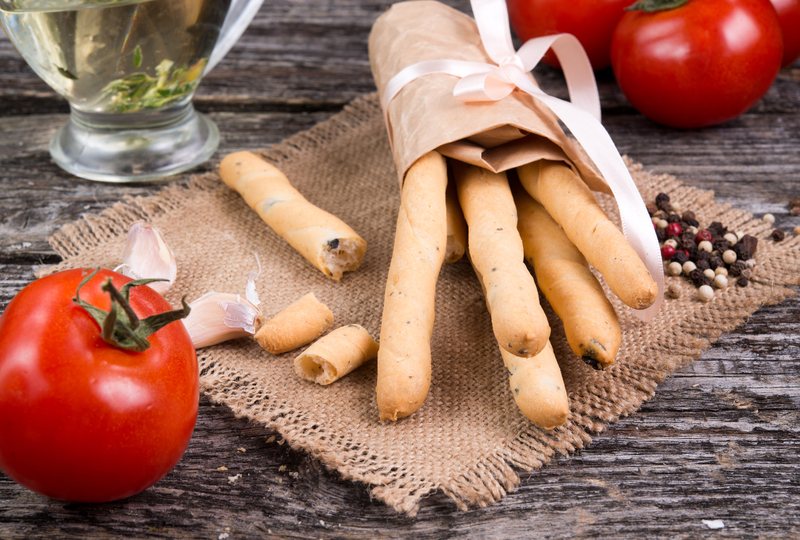Understanding the Best Practices for Pan and Pot Recycling
In a world increasingly concerned with environmental sustainability, recycling everyday household items has never been more crucial. While most people are familiar with recycling paper, plastic, and glass, many are unsure about the proper disposal and recycling of pans and pots. This comprehensive article will delve into the best practices for recycling pans and pots, offering tips, considerations, and options for eco-friendly kitchenware management.

Why Should We Recycle Pots and Pans?
Many households replace cookware periodically due to wear, damage, or upgrades. Rather than disposing of old pans and pots in landfills--where they can take decades to decompose--recycling offers an environmentally responsible alternative. Metal cookware is often made of materials that are resource-intensive to mine and manufacture, such as aluminum, stainless steel, and copper. Recycling these metals conserves natural resources, saves energy, and reduces greenhouse gas emissions from new production processes.
Environmental Impacts of Throwing Away Cookware
- Landfill Space: Pots and pans are bulky and take up significant landfill space if not recycled.
- Resource Loss: Discarding metals eliminates the chance to reuse valuable resources.
- Energy Wastage: Recycling metals uses much less energy than sourcing and refining raw ore.
- Pollution: Improper disposal can leach chemicals or non-biodegradable materials into the environment.
What Types of Pans and Pots Can Be Recycled?
Understanding which cookware is recyclable is the first step toward sustainable disposal. Most traditional pans and pots are made of metal, including aluminum, cast iron, stainless steel, copper, and brass. These metals are typically accepted at scrap metal recycling centers.
- Aluminum Cookware: Lightweight and rust-resistant, commonly accepted at recycling facilities.
- Stainless Steel Pots: Durable and widely recyclable.
- Cast Iron Skillets: Heavy, but valued for scrap metal recycling.
- Copper and Brass Pans: Less common, but highly sought after by metal recyclers.
Note: Non-metallic parts such as plastic handles, glass lids, or wooden grips may need to be removed before recycling.
Non-Recyclable Cookware
Some types of cookware are not suitable for recycling through standard methods:
- Nonstick pans with Teflon coating (unless specified otherwise by facility)
- Cookware with mixed materials or extensive plastic parts
- Ceramic or glass cookware (unless local facilities accept them)
In such cases, explore reuse or repurposing options before considering landfill disposal.
How to Prepare Pans and Pots for Recycling
To ensure your cookware is properly recycled, follow these best practices:
- Clean Thoroughly: Remove all food residue, oil, and grime. Dirty cookware might be rejected.
- Disassemble Parts: Take off plastic, wood, or rubber components. Only metal is recyclable at scrap facilities.
- Check Coatings: Nonstick or enamel finishes may be problematic--consult your recycling center for guidance.
- Bundle Small Items: Tie together small items like lids or handles to prevent loss at facilities.
Where to Recycle Pans and Pots
The avenues for recycling pots and pans vary depending on your location. Here are some top resources:
1. Municipal Recycling Programs
Contact your city's recycling program to ask if they're equipped to receive cookware. Some curbside programs accept small metal items; others require drop-off at a designated facility.
2. Scrap Metal Yards
Scrap metal recyclers are often the best destination for old pans and pots. They typically pay by weight and accept a wide variety of metal cookware, regardless of shape or condition. Be sure to remove non-metal parts beforehand.
3. Thrift Stores and Donation Centers
If your pans and pots are still usable, consider donation to local thrift shops, shelters, or charities. Many organizations eagerly accept gently used cookware.
4. Special Recycling Events
Various communities host special recycling collection events--sometimes called "clean-up days" or "junk drives"--which accept items not suitable for regular curbside pickup, including large or awkwardly shaped pans and pots.
5. Mail-Back and Manufacturer Programs
Certain cookware brands have established take-back or mail-in recycling programs, especially for high-quality or specialty items. Research if your pan's manufacturer offers such options.
Repurposing: A Sustainable Alternative to Recycling
If recycling isn't practical, repurposing offers another opportunity to keep cookware out of landfills. Here are creative ideas for giving your old pans and pots a second life:
- Plant Pots: Use larger pots as planters for flowers or herbs.
- Tool Holders: Turn small pots into caddies for art supplies or kitchen utensils.
- Decorative Displays: Hang pans creatively as wall art in rustic or industrial-themed kitchens.
- Bird Baths or Feeders: Use sturdy metal pans for outdoor bird stations.
Common Questions about Pan and Pot Recycling
Can Nonstick Pans Be Recycled?
Nonstick pans pose special challenges due to their Teflon or PTFE coatings. Most municipal facilities do not accept these in single-stream recycling because the coating contaminates scrap metal. Some scrap yards, however, will accept them if the coating is thoroughly removed, or they may handle disposal in a way that separates the metal from the nonstick layer. Always check with your local recycling facility before recycling nonstick pans.
Do I Get Money for Recycling Metal Pots and Pans?
In many cases, scrap metal yards pay by weight, so you may earn a small fee for metal cookware--especially if you have a large volume. While cast iron and copper fetch higher prices, steel and aluminum are accepted at most facilities.
Can Cookware with Plastic Handles Be Recycled?
Metal pans and pots with plastic or wooden handles should be disassembled before recycling. Remove the handles as much as possible, then recycle the metal part. If the handle cannot be detached, some recycling centers may still accept the pan, but you should always check their policy first.
Tips for Choosing Eco-Friendly Cookware
The best way to minimize recycling and waste is to choose sustainable cookware from the start. Here are tips for making eco-conscious choices:
- Durability: Select high-quality pans and pots that last longer and resist damage.
- Recyclable Materials: Choose cookware made primarily of metal without excessive coatings or attachments.
- Replaceable Parts: Consider brands offering replaceable handles, lids, and other parts, extending product lifespan.
- Warranty and Take-Back Policies: Some companies will repair or recycle their products at the end of life.

Global Efforts and Innovations in Cookware Recycling
Recycling initiatives for pans and pots are growing worldwide. In some countries, regulations now require manufacturers to accept used cookware, encouraging responsible end-of-life management. Research is also underway to develop new, easily recyclable materials for future cookware production.
Examples of Global Practices
- Europe: Extended Producer Responsibility laws make manufacturers accountable for product recycling.
- Japan: Sophisticated sorting centers separate mixed materials from cookware for resource recovery.
- United States: Non-profit programs and city initiatives support community cookware recycling drives.
Conclusion: The Importance of Proper Pan and Pot Recycling
Old pans and pots may seem insignificant, but together they represent a considerable environmental impact if not properly managed. By following best practices for pan and pot recycling--cleaning, preparation, using the correct facilities, and considering reuse or repurposing--you contribute to resource conservation and help reduce landfill waste. Choosing sustainable cookware and supporting manufacturer take-back programs also champion a greener future.
Let's work together to ensure our kitchens remain not just the heart of our homes, but a source of positive change for the planet. Start today by examining your own cookware, and help spread the word about the importance of recycling pans and pots!
Key Takeaways for Best Practices in Pan and Pot Recycling
- Recycle only clean, pure metal cookware at scrap centers.
- Remove non-metal components before recycling.
- Repurpose or donate pans and pots whenever possible.
- Check local recycling guidelines for specialty items like nonstick cookware.
- Consider sustainable, repairable, and recyclable options when purchasing new cookware.
For more information or to find a recycling center near you, visit your local municipality's website or reach out to nationwide recycling organizations.